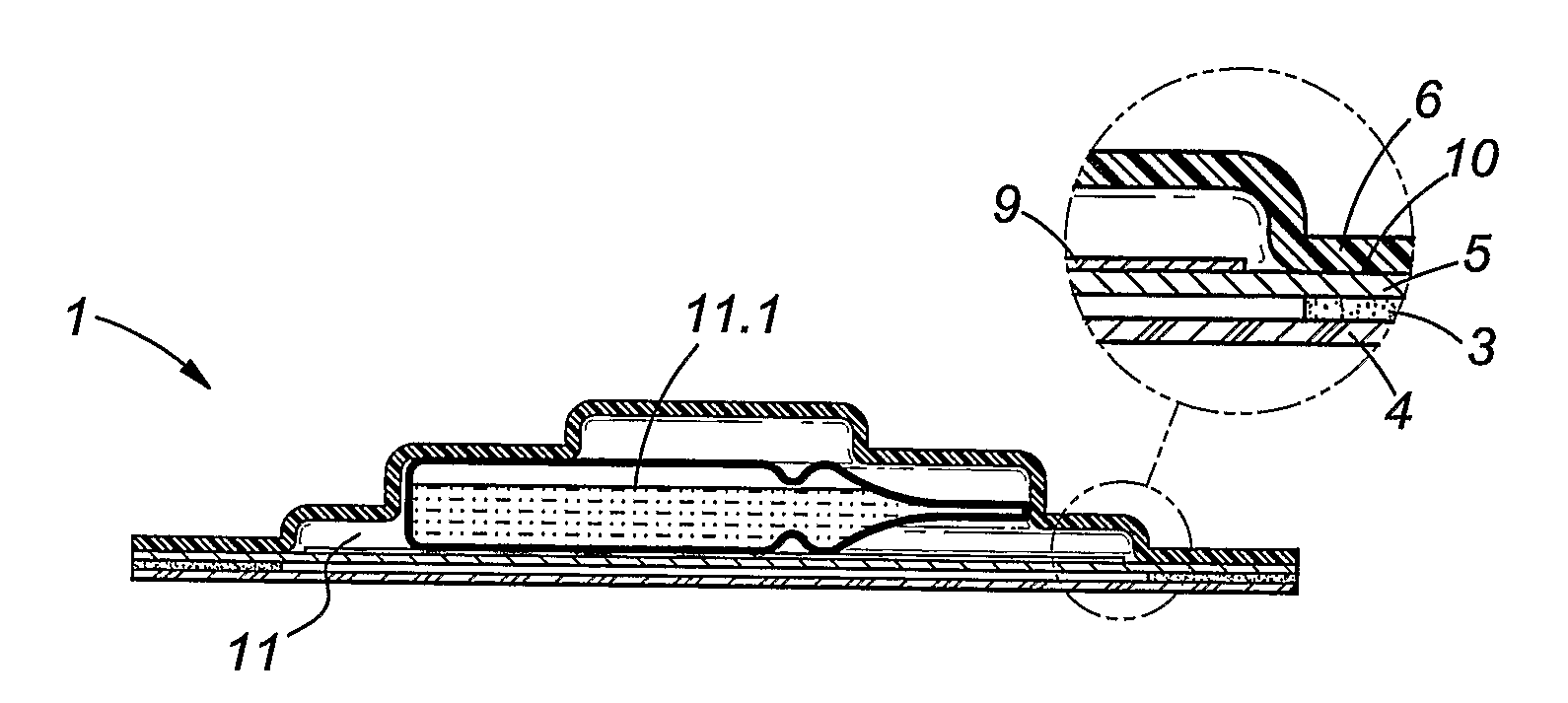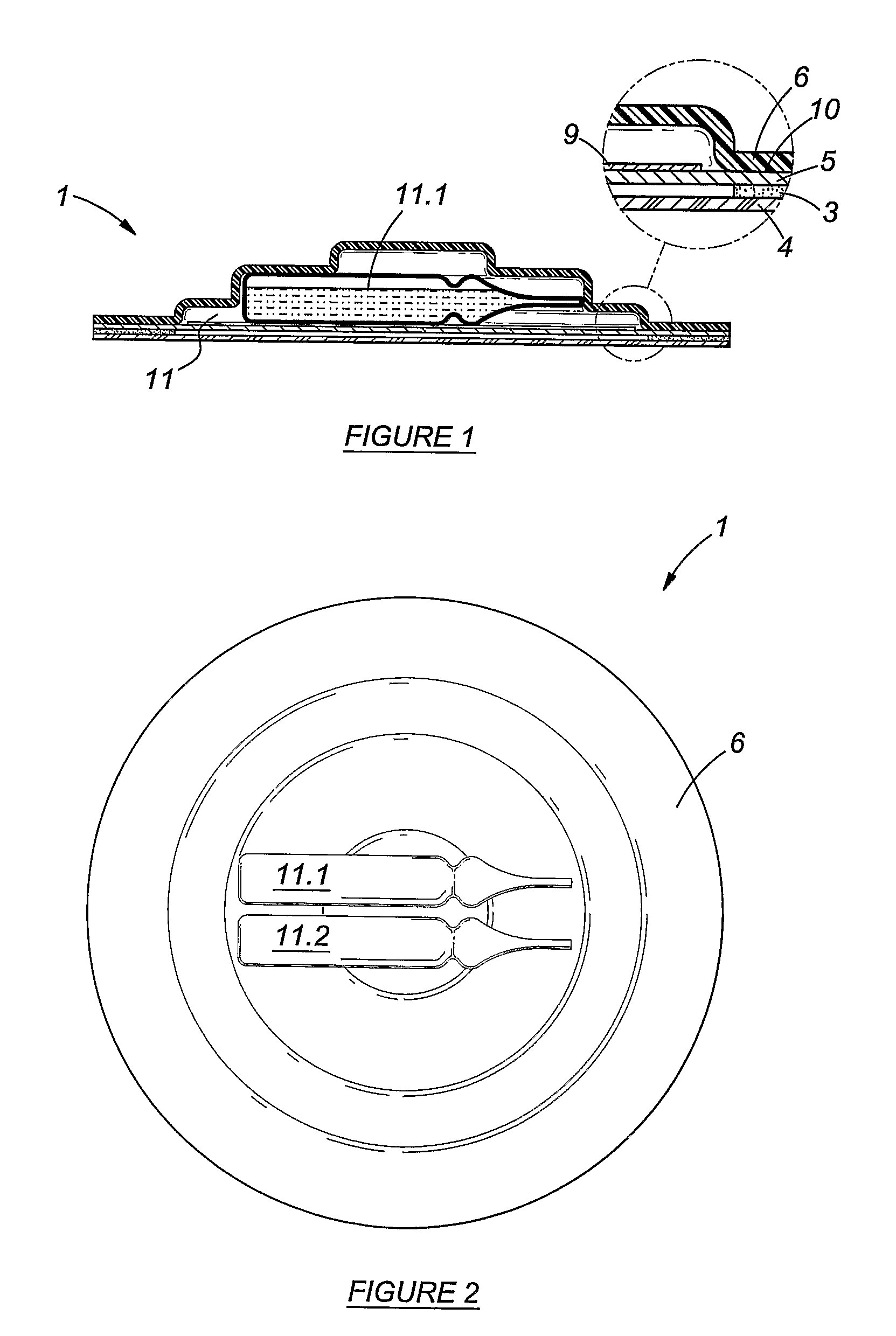Patch
a skin patch and plaster technology, applied in the field of skin patches or plasters, can solve the problems of skin irritation, and many pharmaceutical active substances are not suitabl
- Summary
- Abstract
- Description
- Claims
- Application Information
AI Technical Summary
Benefits of technology
Problems solved by technology
Method used
Image
Examples
Embodiment Construction
[0046]An example of the present invention will now be described merely to illustrate the invention and without thereby limiting the scope of the invention to the exemplary embodiment.
[0047]FIG. 1: In this Figure is shown a sectional view of an embodiment of a patch in accordance with the invention; and
[0048]FIG. 2: In this Figure is shown a top view of another embodiment of the patch of FIG. 1, this embodiment having two containers for components of a composition or for a composition.
[0049]It is emphasised that the drawings are not to scale, and are of a schematic nature. The dimensions of some parts of the patch may be exaggerated for illustrative purposes.
[0050]Reference will now be made to the accompanying drawings in which the same reference numerals are used to indicate the same elements.
[0051]A trans-dermal patch 1 is shown to comprise a skin adhesive coated backing layer 3 and a peelable cover 4. The peelable cover 4 may be removed to expose the proximal layer 5 of the patch....
PUM
| Property | Measurement | Unit |
|---|---|---|
| Composition | aaaaa | aaaaa |
| Size | aaaaa | aaaaa |
| Volume | aaaaa | aaaaa |
Abstract
Description
Claims
Application Information
 Login to View More
Login to View More - R&D
- Intellectual Property
- Life Sciences
- Materials
- Tech Scout
- Unparalleled Data Quality
- Higher Quality Content
- 60% Fewer Hallucinations
Browse by: Latest US Patents, China's latest patents, Technical Efficacy Thesaurus, Application Domain, Technology Topic, Popular Technical Reports.
© 2025 PatSnap. All rights reserved.Legal|Privacy policy|Modern Slavery Act Transparency Statement|Sitemap|About US| Contact US: help@patsnap.com


